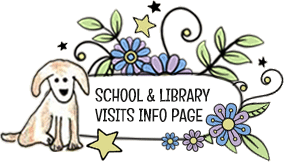
It’s Poetry Friday! Hooray for Sylvia Vardell, who is hosting this week’s blog roll at Poetry for Children. Thanks, Sylvia!
Hi, friends and poets. Happy Poetry Friday!
A few weeks ago I went to a friend’s book launch. I’ve blogged about YA author Kathy MacMillan before, when her debut novel SWORD AND VERSE published. (Read my post about SWORD AND VERSE here.)
Kathy’s latest book is something completely different: A board book story that teaches children and families how to use basic American Sign Language (ASL) together. In addition to being a fun read with great illustrations, NITA’S FIRST SIGNS has the *coolest* design. Hidden sliding pages reveal illustrations of how to make signs like “ball,” “love,” “more,” and “milk.”

NITA’S FIRST SIGNS is published by Familius Press.
Be sure to leave a comment if you’d like to be entered into a giveaway: A signed copy of NITA’S FIRST SIGNS, plus some other fun ASL-related treats.
Kathy and I have talked a few times about posting an ASL poem for Poetry Friday. I’m so glad to welcome her to the blog today. We’ll be taking a look at the poem “Dandelion” by Clayton Valli. As Kathy, who is an ASL interpreter and trainer, pointed out, “This will be a new way of experiencing poetry for most of your readers.” It certainly was for me.
Welcome, Kathy!
When Laura asked me to select a poem to go with her post about my book, Nita’s First Signs, I was so excited to share some American Sign Language (ASL) poetry with her readers.
ASL poetry does not have a written form; it is composed and performed entirely in American Sign Language. While I could give you a rough transcript of what the poem means, that would not do justice to the cleverness and beauty or the interplay of form and meaning that an ASL poet shapes. ASL poetry simply must be experienced in a visual medium. For that reason, I will give you a description of the events and meanings in the poem, and then let you experience watching it for yourself.
Meter, alliteration, rhythm, and rhyme are used in an entirely different way in a visual language. For example, a rhyme in ASL may consist of using two signs with similar handshapes to create a pleasing association, or adjusting the movement of the signs to lend visual harmony to the poem.
The poem I have chosen is a classic of ASL literature: “Dandelion” by Dr. Clayton Valli. Dr. Valli was a pioneer in ASL poetry and linguistics, and was one of the first people to analyze the characteristics of ASL poetry.
The poem, which is a little over a minute long, addresses the centuries-long oppression of Deaf people by the hearing world, which has long tried to eradicate deafness. Valli uses the image of dandelions to represent Deaf people and sign language itself. The man who pulls up and mows down the dandelions represents the hearing world trying to destroy Deaf culture. Valli uses various linguistic tools called classifiers to show the shape and movement of the dandelions as they grow and change. In the end, just like dandelions, the Deaf community has demonstrated a will to survive.
I chose this poem because it emphasizes the intrinsic value and beauty of ASL and the Deaf community. While Nita’s First Signs can be enjoyed by any families — hearing, Deaf, or hard-of-hearing — it is, at its heart, a story about the value of communication. Some readers have told me they think that Nita is Deaf, and some say hearing. The truth is, it doesn’t matter — because the most important gift any parent can give their child is the gift of communication. Giving a child the tools to communicate sends the message that we truly value what they have to say.
***
Thanks for visiting, Kathy, and for sharing Dr. Valli’s poem.
Kathy MacMillan is a writer, American Sign Language interpreter, librarian, signing storyteller, and avowed Hufflepuff. Nita’s First Signs, the first book in the Little Hands Signing board book series from Familius Press, was praised as “a wonderful introduction to the world of American Sign Language…for ALL infants, toddlers children AND adults” by Marlee Matlin. She is also the author of eight resource books for educators, librarians, and parents, including Little Hands and Big Hands: Children and Adults Signing Together (Huron Street Press, 2013). Her debut young adult novel, Sword and Verse (2016) was a finalist for the Compton Crook Award, and its companion novel, Dagger and Coin (2018) has been called a “complex feminist fantasy” by author Heidi Heilig. Kathy serves as the co-Regional Advisor for the Maryland/Delaware/West Virginia Region of the Society for Children’s Book Writers and Illustrators. She lives near Baltimore, MD. Find her online atwww.kathymacmillan.com or on social media @kathys_quill.
Check out some of my favorite photos from the NITA’S FIRST SIGNS book launch at Baltimore’s Ivy Bookshop. Remember to leave a comment for a chance to win a signed book and goodies. I will draw a name on Thursday 7/19 and will announce the winner next Poetry Friday, 7/20.

Find out more about Kathy’s Stories by Hand workshops here.







I love that you have chosen a poem about dandelions, which I have just been closely observing/researching for my PoetrySwap. I get this on a much deeper level than if I hadn’t just been immersed in dandelion videos. (So much I didn’t know about dandelions!!) The book looks adorable! A gorgeous, inviting book to share with children.
I wish I had a video to show you all how the sliding pages work, revealing the “how-to” illustration for each sign. It’s brilliant.
This is my first experience of ASL Poetry – and wow! Very powerful. Thank you for sharing it.
Kathy’s book too sounds like a wonderful tool for children and adults alike.
I agree, Sally. It made me realize how much I expect videos to come with sound. Without it, I could focus on what I was seeing.
The book looks adorable. Wow! I also learned something new. I never heard of ASL poetry before.
Watching this poem drives home the point for me that ASL is its own, unique, language — not a version of spoken American English.
Thanks for sharing this video–I like the dandelion metaphor in the poem. What a lovely brightly colored book, congratulations Kathy–it’s bursting to say come and open my pages. Thanks for sharing all here Laura!
Thanks for stopping by, Michelle!
Thanks Michelle!
This is so cool! Just this spring, my library partner and I were looking specifically for newly published books about ASL. I’m adding this book to my list. And, poetry in ASL…..how beautiful….how expressive and everything that poetry is. This post is a keeper. I’m putting it on my pinterest poetry board. Thank you so very much for sharing this!
This week, I’m interviewing Margaret Simon about her debut book, Bayou Song, over on A Word Edgewise.
Great, Linda. Thank you! Let me know if you’d like Kathy’s contact info. I’m sure she’d have other books about ASL to recommend.
Hi Linda! Check out the resources section on my ASL website for more recommendations: https://storiesbyhand.com/resources-2/
This is new to me, and thanks for sharing the new book and the video of the poem, Laura. I watched it several times, learning to pay closer attention to his hands. The book looks wonderful.
Thanks, Linda. It definitely invites several viewings.
I’d love to win! I am getting ready to kick off an Online Auction for a local charity I am on the Board with in Harford County. If I win I plan to add this as a prize <3.
Fascinating and wonderful . . . . the way that alliteration is defined in ASL, for example. Thanks for sharing this with us!
Thanks, Jen. Yes, I found that fascinating too.
Hi Linda! Check out the resources section on my ASL website for more recommendations. The comments section is not letting me post the direct link, but if you go to storiesbyhand.com and click on the “resources” tab, you’ll see it!
Wow, that video! I’d love to learn ASL. This reminds me. Thank you! xo
Watching this video was like listening to a song in an unknown language. Although I didn’t understand the “words,” the message and feelings were unmistakable! “Giving a child the tools to communicate sends the message that we truly value what they have to say” is such an important truth. Thank you for sharing this, Laura!
Thanks, Catherine. This question came up during the Nita’s First Signs launch event — someone asked whether learning signs might delay or inhibit speech in young children. Kathy was very clear that the opposite is true. The more tools for communication we give kids, the better.
I wondered if alliteration would be with signs instead of sounds! Of course it would!! This is so interesting. My grandbabies learned signing for needs, and “please” and “thank you”. What a blessing that was to be able to tell if they were thirsty or hungry, wanted more, and to learn manners…all before knowing the words. It did not in any way delay their speech either…both are “avid talkers”!!
Thanks for sharing that, Donna. Great example of how signs aid communication for young children, whether they are hearing or Deaf.
Oh my goodness, this was SO fascinating! I learned so much about how poetry works in ASL and it’s wonderful to see. Thanks so much for sharing this!
Thanks, Sylvia. I’d love to do a longer post on this topic.
Just wonderful, Laura. I love poems about dandelions, too. 🙂
Neat book. I’ve tried a bit of ASL (or AUSLAN in Australia) for my son but not consistently. He’s not hearing impaired but is a late talker. It’s good to have something to try and bridge communication!
I hope you get a chance to check out the book, Erin.
Wow! That is a different experience of poetry. Watching it makes me wish I knew more ASL so that I could get more out of it. I did learn a little way back in middle school, but much as been forgotten.
Very cool! I love watching ASL – it’s like dancing.
Thank you for this beautiful new (to me) way to experience poetry! I can’t wait to share this with my students!!
Thanks for sharing this! What a beautiful poem, and lovely introduction to the different ways we communicate with each other!
What a wonderful video! I definitely want to learn ASL because it is such an important and lovely way to communicate with one another.
Funny, this morning I was trying to learn the ASL alphabet! Elena wants to learn more ASL and she wants me to talk with her. I have posted ASL poems before — ASL is a natural for poetic expression! Elena looks very graceful when she signs. Kathy’s book is one I will want to give as a present. Thanks for letting us know about it! (*Hufflepuff secret handshake*)
Loved watching this video and seeing the poem! Thanks for the interesting interview and opening our eyes to a different poetry language!
[…] Tabatha Yeatts, you are the winner of the NITA’S FIRST SIGNS book giveaway! […]